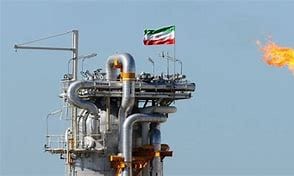iranintl – Despite a recent surge in oil exports, Iran is grappling with a large budget deficit partly due to inadequate oil income, raising questions about its real earnings.
Davoud Manzour, the head of Planning and Budget Organization (PBO), revealed on October 22 that the 7-month budget has only been realized by 70%, largely due to the unrealistic oil income estimates. While specific figures were not mentioned, Manzour cited discrepancies in both the projected oil prices and export volumes compared to the budget estimates.
As per this year’s government budget, Iran needs to export 1.5 million barrels per day (mb/d) of crude oil and gas condensate at an average price of $85 per barrel to balance its budget, which heavily depends on oil revenues. The government’s budget this year totals 22,630 trillion rial (approximately $45 billion at the free-market USD rate, with the government’s share of total oil export revenues standing at 6,200 trillion rials ($12.5 billion), representing 42.5%.
Earlier, the Planning and Budget Organization had reported that only 42 percent of the expected oil revenues were realized from March 21-July 20, a figure that increased to 50 percent in August following higher oil exports. However, the realization of only 70 percent of the government budget over seven months implies a budget deficit of 3,960 trillion rials during that period. If this trend persists, it could culminate in a budget deficit of 6,788 trillion rials ($13.5 billion), marking the highest budget deficit in Iran’s history.
The reasons for lower oil revenues
A notable point is that Manzour gave a much lower daily oil export figure than what has been mentioned by Reuters and others since August that claimed 1.85 million barrels per day. At this point the reason for the discrepancy is hard to pinpoint, but Iran’s revenue problems point to both lower volumes of exports and lower revenues.
Iran is delivering oil to Chinese independent and small refineries, called teapots, with 3-month delays in payments. Therefore, Iran’s March-September oil budget realization should be calculated based on January-July 2023 export data.
OPEC statistics indicate that during this period, the average Iranian oil price was $81/barrel, or $4 less than the estimate in the budget bill.
Though Iran’s oil exports soared to 1.5 mb/d in the summer, during January-July 2023, its average oil shipments were 1.2 mb/d, according to Kpler, commodity intelligence company.
On the other hand, about 6.6% or 80,000 b/day of Iranian exported oil was delivered to Syria in this period, a country that receives reportedly free oil from the Islamic Revolutionary Guard Corps, as Iran’s financial assistance to the Bashar Asad regime and regional proxies such as Hezbollah. Iran also delivered 22,000 b/d of gas condensate (ultralight oil) to Venezuela in this period to enable Caracas to boost its crude exports. The Venezuelan oil is too heavy for easy shipping, but when mixed with light Iranian oil, it becomes easier to ship.
Therefore, in total Iran exported only a little more than 1.1 mb/d to China in January-July 2023, about 400,000 b/d less than the budget bill estimate.
The costs for bypassing US sanctions
According to the Reuters and Bloomberg’s reports, Chinese teapots purchase Iranian oil with $10-$12 per barrel of discount.
On the other hand, international tanker tracking companies say a huge amount of Iranian oil is sold to China by middlemen and brokers, by ship-to-ship transfers in and the cargoes mostly are rebranded as Malaysian oil. The transfers take place in international waters, and apparently Malaysia does not interfere.

Therefore, Iran is not only giving a discount to end buyers, but also offers an undetermined amount of its profits to middlemen and tanker companies that are engaged in the diversionary oil export operations. The actual amount that Iran eventually earns could be closer to $40 per barrel than around $70.
On the other hand, Iran barters a part of its oil with Chinese goods.
The China Custom Administration’s statistics show a huge unbalanced non-oil trade with Iran. China has exported $7.493 billion goods to Iran in the first eight months of 2023, while its non-oil imports from Iran was only $3.287 billion.
The barter stems partly from US sanctions on Iran’s oil exports and the banking sector. Chinese buyers cannot easily transfer foreign currencies to Iran. The money needs to be laundered in different ways and in various countries in Asia and in the Persian Gulf.
While the Biden administration has not rigorously enforced US sanctions, thus permitting increased Iranian exports, there’s a possibility that some of the optimistic estimates regarding Iran’s oil revenues may not be entirely accurate. However, if the sanctions were enforced and Tehran could only sell a limited amount, such as the 500,000 barrels per day seen in 2019 and early 2020, the financial situation in the Islamic Republic would be considerably more dire today.
 Shabtabnews In this dark night, I have lost my way – Arise from a corner, oh you the star of guidance.
Shabtabnews In this dark night, I have lost my way – Arise from a corner, oh you the star of guidance.



